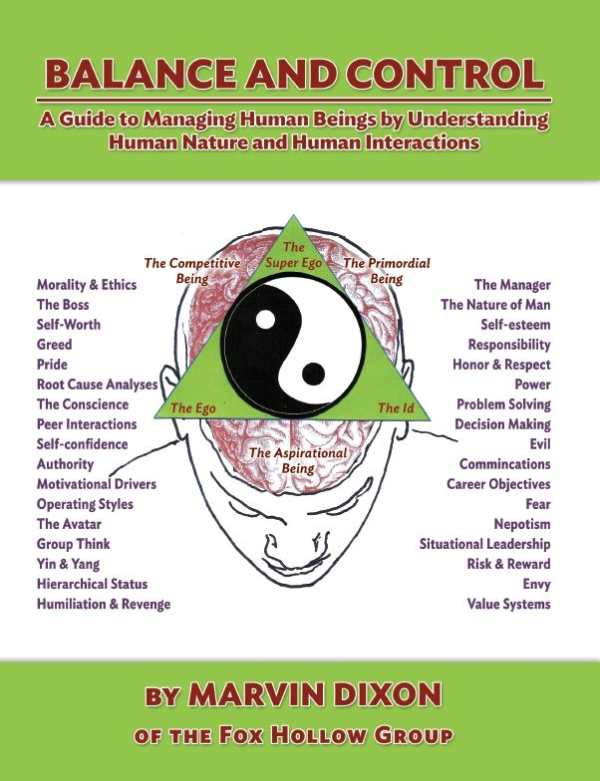Balance and Control
A Guide to Managing Human Beings by Understanding Human Nature and Human Interactions
Practical advice on the process of self-assessment for managers brings attention to employee relationships.
Marvin Dixon’s Balance and Control: A Guide to Managing Human Beings by Understanding Human Nature and Human Interactions aims to demystify the dynamics at play between management and staff by illuminating the nuances of communication and providing strategies to avoid imbalance in these relationships. It contains valuable insights told in a refreshingly frank way.
The book guides managers through a process of self-assessment and toward a greater understanding of human behavior in order to more effectively lead teams and create meaningful, rewarding, and successful work environments. The central thesis—that self-awareness coupled with management skills development is a lengthy, nuanced, but also essential and rewarding process—is reinforced with anecdotal examples from the author’s extensive management experience, as well as practical strategies for how to work through common problems.
Dixon heavily and effectively emphasizes the role that phenomena such as ego and power dynamics play in workplace relationships. Particularly notable are detailed explanations of boss archetypes (such as the Maestro and the Tyrant) and of how to glean meaning from employees’ behavior patterns. Many of the models described are highly recognizable, and the advice given for working with them is both practical and feasible. A more consistent chapter structure—with the addition of a recap for each, as is helpfully employed in chapter 12—would further improve the book’s backbone, as would much more concise explorations on central topics.
There is no facade of objectivity here, and as a result, the narrative tone is sometimes quite harsh. In this vein, the entire postscript is dedicated to outlining and refuting the editor’s feedback, and explaining why the author took, or, more often, did not take, her advice. It comes across as defensive, ending the book on a rather off-putting note. This, in addition to persistent mechanical errors and word misuse throughout, stands in stark contrast to one of the text’s main themes: the importance of fine attention to the details of management work. This may have a negative effect on the book’s ability to authoritatively coach would-be managers on this subject.
The technical problems do not negate the book’s usefulness, however, and readers with the patience to sort through ideological musings on topics only loosely connected to the volume’s subjects (such as infanticide and religious-based discrimination) will still come away with useful insights. The discussions of interpersonal interactions are undeniably important, and while the book should not be considered a comprehensive guide to working through all interpersonal problems encountered in a workplace, it does contribute a valuable piece of the puzzle that is management strategy: an emphasis on self-consciousness and its essential role in business.
Reviewed by
Sarah Stewart
Disclosure: This article is not an endorsement, but a review. The publisher of this book provided free copies of the book and paid a small fee to have their book reviewed by a professional reviewer. Foreword Reviews and Clarion Reviews make no guarantee that the publisher will receive a positive review. Foreword Magazine, Inc. is disclosing this in accordance with the Federal Trade Commission’s 16 CFR, Part 255.

